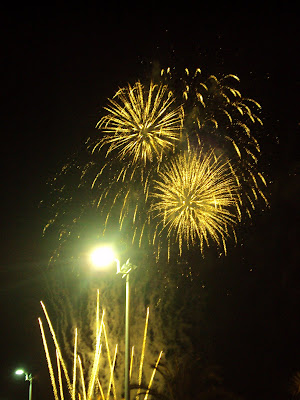
In a nutshell
Benidorm. Beni-York. Beni-Vegas. The most popular holiday resort in mainland Spain. Population: 100 000 (swells to 300 000 during the summer months). Benidorm boasts over 300 days of sunshine per year thanks to its 'Mediterranean microclimate'. It also boasts over 140 skyscrapers (buildings with over 20 floors) -more than anywhere else in the world if you exclude New York. Over 90% of people who travel to Benidorm will revisit at some point. Over 40 000 hotel beds (3rd highest amount in Europe after London and Paris). Over 800 bars. And a ridiculous amount of Brits.
After reading the statistics, I was curious. The rise of cheap package holidays and guaranteed sunshine tempted the Brits (and the Germans, Dutch and Scandinavians) and why wouldn't it? However the vision I'd had of Benidorm in my head was of red faced Brits getting pissed for less than 5 euros, cooked breakfast in tow. Was the stereotype true? And why do people keep going back to the jewel of the Costa Brava?
Upon arrival in Benidorm I was surprisingly optimistic. A new place to explore, maybe it wouldn't be as bad as the image I had in my head. 20 minutes later I was ready to leave again. All I could see were ugly buildings, buses, beer and Brits- far from idyllic. However it wasn't always like this...
In the early 1950s Don Pedro Zaragoza, mayor of Benidorm had a vision: to transform the sleepy fishing town into a tourist metropolis. Apparently his idea to build hotels upwards were to please the people and ensure that everyone would have a sea view (definitely not for financial gain then...). Zaragoza famously drove the 300 miles to Madrid on his Vespa to personally get Franco's permission so that ladies could sport bikinis on the beach (the first place in Spain that allowed this, interestingly). Regardless of his motives, old Zaragoza's plans were successful. Benidorm as we know it was born. The rest, as they say, is history.
Over 50 years later and there are still bikinis on Levante beach (which is surprisingly pleasant if you ignore the skyscrapers that surround it). There are also thousands of British people- red faced as they forgot the Ambre Solaire, wanting 24 hour entertainment and a decent cuppa. A mini England in the Spanish sunshine- Benidorm was exactly how I imagined. After wandering up and down the main 'strip' full of souvenir shops and British bars (I even found a Geordie bar, much to my amusement), I was ready to return to the safety of Alicante.
Now living abroad for the past year has definitely taught me not to pigeonhole and stereotype, 'don't judge a book by its cover' blah blah blah. Yet the all too negative stereotype other Europeans have of 'Brits Abroad' was unfortunately confirmed in Benidorm. I felt ashamed to be British as I witnessed my fellow compatriots drinking, shouting and swearing in the streets at one o'clock in the afternoon.
A moment of respite

A 5 minute walk from Levante beach, central Benidorm
As I walked uphill at the top end of Levante beach I turned a corner and found a cove, just moments away from the hustle and bustle of Benidorm. Barely anyone was there- British ignorance at its best, yet for me it was the only redeeming feature of the entire city. Maybe it's only a matter of time before 'Bradley's British Beach Bar' opens and the peace is gone...
P.S. This Benidorm article is great from The Guardian (where else?)

















